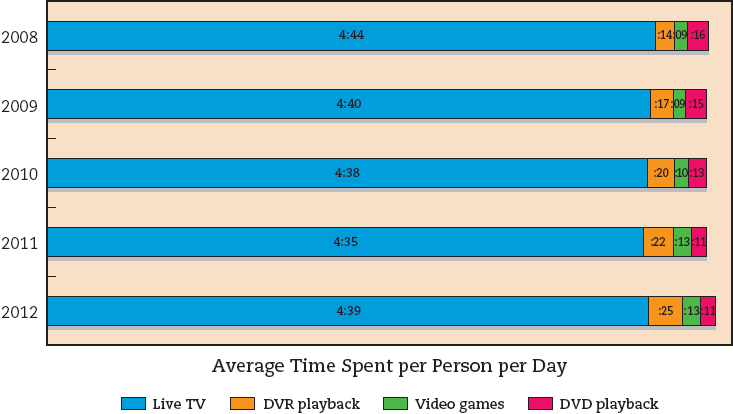The Third Screen: TV Converges with the Internet

The Internet has transformed the way many of us, especially younger generations, watch movies, TV, and cable programming. These new online viewing experiences are often labeled third screens, usually meaning that computer screens are the third major way we view content (movie screens and traditional TV sets are the first and second screens, respectively). By far the most popular site for viewing video online is YouTube. Containing some original shows, classic TV episodes, full-length films, and of course the homemade user-uploaded clips that first made the site famous, YouTube remains at the center of video consumption online. Owned by Google, YouTube by 2013 was drawing more than one billion unique visitors per month and uploading forty-eight hours of new video per minute.2
But YouTube has competition from sites that offer full-length episodes of current and recent programming. While viewers might be able to watch snippets of a show on YouTube, it’s rare that they will find a full episode of popular, professionally produced TV shows like Mad Men, New Girl, and Homeland. Services like iTunes or Amazon Instant Video offer the ability to download full seasons of these shows, charging just $0.99 to $2.99 per episode. And streaming site Hulu (a partnership among NBC, Fox, and Disney) allows viewers to watch a certain number of episodes of a show for free—but with ads.

In late 2010, Hulu started Hulu Plus, a paid subscription service. For $8 a month, viewers can stream full seasons of current and older programs and some movies and documentaries on their computer, TV, or mobile device. Hulu Plus had more than 2 million subscribers by early 2012. Netflix, which started streaming videos back in 2008, has moved further away from a DVD-through-mail model and become more focused on a less expensive (no postal costs) online streaming model. More than 66 percent of Netflix’s subscribers are now streaming movies and TV shows online.3 With 26 million subscribers by 2012, it’s become bigger than Comcast, the largest cable company, with its 23 million subscribers.4 Netflix is also negotiating with major film and TV studios for the rights to stream current episodes of prime-time television shows—and seemed willing to pay between $70,000 and $100,000 per episode.5
In addition, cable TV giants like Comcast, Time Warner, and HBO are making programs available to download or stream through sites like TV Everywhere, Xfinity TV, and HBO GO. These programs are only open to subscribers who can download cable TV shows using a password and username. In 2012, Netflix, looking to increase its subscriber base, started talks with some of the largest U.S. cable operators about adding Netflix as part of their cable packages. However, cable and DBS companies are, thus far, resisting Netflix’s proposition, and are rolling out their own video-streaming services instead. Comcast introduced Xfinity Streampix in February 2012, expanding the Xfinity offerings to include even more movies from top Hollywood studios and past seasons of TV shows. The goal, according to Comcast executive Marcien Jenckes, is “to be the single stop for video needs for consumers.”6 In addition, DirecTV and Blockbuster have partnered—as have Verizon and Redbox—to create streaming services of their own.
In most cases, these third-screen sites operate as catch-up services rather than as replacements for broadcast or cable TV, allowing viewers and fans to “catch-up” on movies and programs that played earlier in theaters or on television (see Figure 6.3). Now with devices like the Roku box and gaming consoles that can stream programming directly to our television sets, and newer television sets that are Internet ready, the TV has become one of the latest converged devices.

Source: Nielsen, The Cross Platform Report, March 2013, http://www.slideshare.net/mapleaikon/crossplatform-report-march-2013-nielsen.